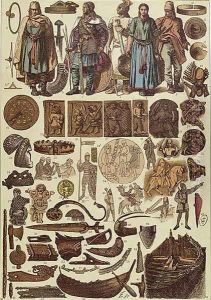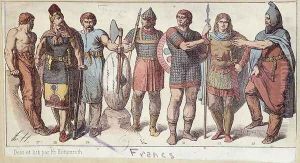Friedrich Hottenroth Paintings
Friedrich Hottenroth was a German painter, graphic artist, and writer, born on August 5, 1840, in Gelchsheim, Bavaria. He is best known for his detailed depictions of folk costumes (Trachten), as well as for his works on cultural history that include illustrations of traditional customs, crafts, historical fashion, and everyday life of past centuries.
Hottenroth's interest in folk culture and historical costumes was not only an artistic pursuit but also a scholarly one. He meticulously researched the subjects of his works, which became valuable resources for both art and cultural historians. His drawings and watercolors are characterized by their precision and attention to detail, reflecting his dedication to accurately representing the attire and customs of different regions and periods.
He authored and illustrated several books, with 'Handbuch der deutschen Tracht' being one of his most notable works. This handbook of German traditional costumes was an extensive compendium of his studies and illustrations in the field of folk costumes. Another significant contribution by Hottenroth was 'Das deutsche Wohnhaus', which explored the history and diversity of German domestic architecture.
Friedrich Hottenroth's dedication to the preservation of cultural heritage through his art and writings was an important part of the larger 19th-century folkloristic movement that sought to record and preserve the disappearing rural traditions in the face of rapid industrialization and modernization. His work continues to be a valuable resource for those interested in traditional European cultures and their historical manifestations.
Hottenroth passed away on October 15, 1917. Although he may not be widely known outside of specialist circles today, his legacy endures through his contributions to the documentation of cultural history. His works are still referenced by historians, ethnologists, and artists who seek an understanding of the traditional folk cultures of Germany and Europe.

